Skilled use of dermatoscopy has been shown to increase diagnostic accuracy for both melanocytic and nonmelanocytic skin malignancies2–5 and this improvement can be seen with surprisingly short training periods.6 The evidence for dermatoscopy is such that it is now regarded as standard of care for the management of pigmented skin lesions.7 As general practitioners manage over half of the skin cancer cases in Australia,8 they should be as familiar with using the dermatoscope as the stethoscope, and this familiarity is within the reach of all interested practitioners.
Dermatoscopes and dermatoscopy
A dermatoscope is more than a magnifying lens and light source. By eliminating reflection from the skin surface, the dermatoscope allows better visualisation of the patterns formed by pigment and blood vessels – critical features in the diagnosis of skin lesions. This can be done using fluid to couple the lens to the skin or by cross-polarisation of light source and lens. Colour rendition varies with the different types of instruments,9 hence familiarity with your chosen device is important.
How can I use dermatoscopy to enhance my practice?
There are no evidence based guidelines about what lesions to examine, but we believe 'the more, the better'. Some lesions, such as unequivocal seborrhoeic keratosis, can be diagnosed by their macroscopic appearance, but all visible lesions that cannot be confidently diagnosed should be examined with a dermatoscope. Any lesion that 'breaks the pattern' of the patient's other lesions – by being isolated, larger or just 'different' – needs careful examination. Pattern recognition applies at all levels of lesion assessment: clinical, dermatoscopic and histological. Malignant tissue behaves and grows chaotically. Therefore a lesion that appears different to other lesions clinically may also show asymmetry and disorder when viewed by the clinician with a dermatoscope or by the pathologist with a microscope.
While dermatoscopy is increasingly being applied successfully to the diagnosis of nonpigmented lesions,10,11 this article considers only pigmented lesions.
How do I interpret the dermatoscopic image?
With respect to diagnostic algorithms it has been stated: 'A method which cannot be taught is barely a method at all'. We agree that a teachable and tested method of dermatoscopic diagnosis is superior to an intuitive approach.
Published methods of dermatoscopic diagnosis include: the classic pattern analysis,12 CASH,13 the ABCD method of dermatoscopy,14 the 7-point checklist,15 the Menzies method,16 the 3-point checklist',17 the revised pattern analysis18 and a short modification of revised pattern analysis called 'chaos and clues'.5 Most of these methods involve numerical calculations, and only revised pattern analysis and chaos and clues have been assessed for all pigmented skin malignancies, including the nonmelanocytic ones: pigmented basal cell carcinoma (pBCC) and pigmented squamous cell carcinoma (pSCC). pSCC in situ – also known as pigmented intra-epidermal carcinoma (pIEC) is a lesion that commonly mimics melanoma.
The chaos and clues algorithm was evaluated in a study of 463 consecutively treated pigmented skin lesions (including 29 melanomas, 20 of which were in situ) in a general practice in Australia and was found to have a sensitivity of 90.6% and a specificity of 62.7% for the diagnosis of malignancy of any type.5
The structure of the chaos and clues algorithm and its use in everyday practice is simple. It starts with the method and language used to describe lesions, the same method and language that was developed for the revised pattern analysis.18
There are only five basic elements used to describe pigmented structures, which are objectively defined using the following geometric terms (Figure 1):
- line: a two dimensional continuous object with length greatly exceeding width
- pseudopod: a line with a bulbous end
- circle: a curved line equidistant from a central point
- clod: any well circumscribed, solid object larger than a dot; clods may take any shape
- dot: an object too small to have a discernable shape.
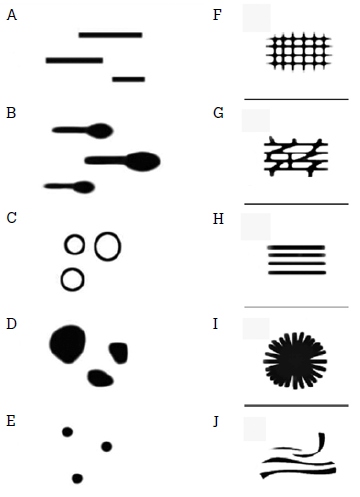
Figure 1. Structures seen with a dermatoscope
Lines (A), pseudopods (B), circles (C), clods (D), dots (E). Lines can be reticular (F), branched (G), parallel (H), radial (I), curved (J)
Lines are further classified into five types: reticular, branched, parallel, radial and curved, as these have diagnostic significance.
Blood vessels are also described using similar well defined terminology19 (Figure 2).
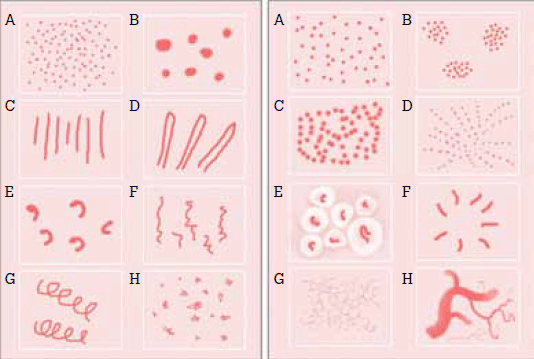
Figure 2. Vessel patterns
Vessel structure (left): dots (A), clods (B), lines (C), looped (D), curved (E), serpentine (F), helical (G), coiled (H)
Vessel arrangement (right): random (A), clustered (B), serpiginous (C), linear (D), centred (E), radial (F), reticular (G), branched (H)
A pattern is formed by multiple repetitions of a basic element over a sufficient portion of a lesion to be recognised on a rapid scanning assessment. An area large enough to constitute a pattern, but with no basic element dominating, is called 'structureless'.
In contrast to patterns, a clue to malignancy may be a small feature whose detection requires close inspection.
Colour has great diagnostic significance in dermatoscopy. The main pigments are melanin and haemoglobin, and the colours produced are shown in Figure 3. Although melanin is black, it appears as different colours depending on how deeply in the skin it is located.20 Very superficially it looks black, but deeper in the epidermis it appears brown. In the dermis, melanin appears either grey or blue. Therefore in many circumstances, these colours indicate the presence of melanin pigment deeper in the skin than expected, which can be a clue to invasive malignancy.
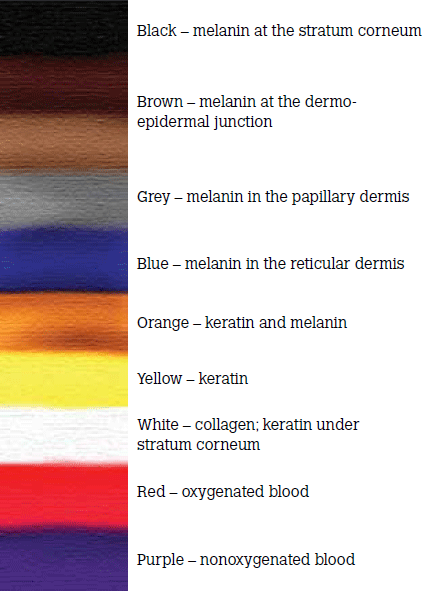
Figure 3. The interpretation of colours seen with a dermatoscope
Chaos and Clues
The chaos and clues algorithm9 is shown in Figure 4.
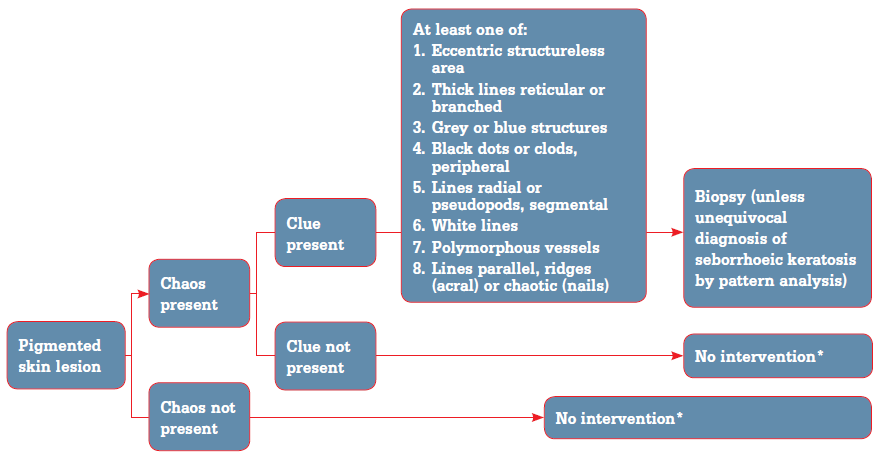
Figure 4. The chaos and clues algorithm
* Exceptions: changing lesions on adults, dermatoscopic grey on head or neck, pigmented nodular lesions, parallel ridge pattern (palms or soles)
Chaos
The first step is to dermatoscopically assess the pigmented lesion for 'chaos', defined as 'asymmetry of structure or colour'. Chaos is assessed by pattern not shape (Figure 5a–d). As perfect symmetry is biologically rare, some deviation from geometrical symmetry must be expected. It is helpful to imagine a piece of carpet that can be cut in any shape but which maintains a uniform pattern. It would be regarded as having no chaos regardless of how irregular the shape was and regardless of the presence of a little dust on one part.
If no chaos is present, with the exceptions listed in Figure 4, the examiner moves to the next lesion. With increasing experience the assessment of chaos can be performed more rapidly.
If chaos is present, the examiner then searches carefully for eight clues to malignancy. If one or more of these clues are found, an adequate (preferably excisional) biopsy is performed unless an unequivocal diagnosis of seborrhoeic keratosis can be made by pattern analysis.
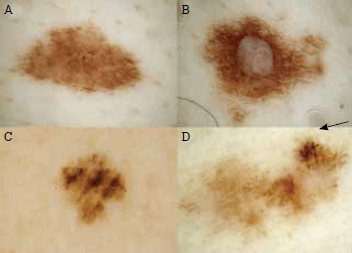
Figure 5. Four lesions encountered on the one patient
Lesions A, B and C are symmetrical (lack chaos) when shape is disregarded.
Lesion D is asymmetrical (exhibits chaos) and had the clue to malignancy of pseudopods (arrow). An in situ melanoma was diagnosed
The eight clues to malignancy
The following eight clues to malignancy are featured in Figure 6 and 7.
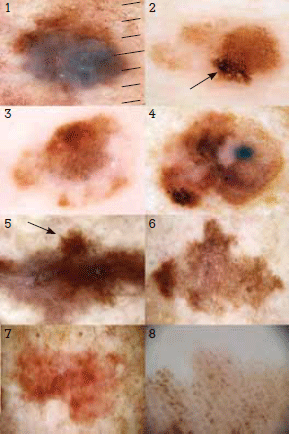
Figure 6. Clues to malignancy in melanomas numbered according to the flowchart
1 – eccentric structureless (blue),
2 – thick lines reticular (arrow),
3 – grey dots,
4 – black dots, peripheral,
5 – radial lines, segmental (arrow),
6 – white lines,
7 – polymorphous vessels,
8 – parallel ridge pattern
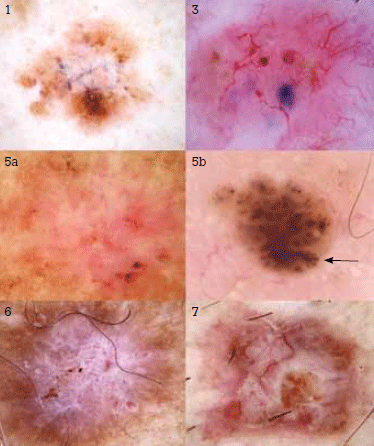
Figure 7. Clues to malignancy in nonmelanocytic pigmented malignancies numbered according to the flowchart
1 – eccentric structureless (white) in a pIEC,
3 – blue clods in a pBCC,
5a and 5b – lines radial segmental (arrows) in two pBCCs,
6 – white lines in a pBCC,
7 – polymorphous vessels in a pBCC
Eccentric structureless area – any colour except skin colour
Structureless zones are commonly found centrally in benign lesions (most commonly congenital naevi and dermatofibromas). When not located centrally, a structureless zone is a clue to malignancy. It can occur in melanoma, pBCC and pIEC.
Thick lines reticular or branched
When the reticular and branched patterns are seen in benign lesions, the lines that form the pattern are clearly thinner than the spaces they enclose. When the lines are thicker than the spaces they enclose, this may be due to rete ridges being packed with melanin-laden melanocytes and it is a clue to malignancy, seen in melanoma.
Grey or blue structures
Grey or blue lines, circles, clods or dots are caused by melanin in the dermis which can be in neoplastic cells or in melanophages. In lesions with chaos, dermal melanin suggests malignancy. Grey and blue structures can occur in melanoma,21 pBCC22 or pIEC.23
Black dots or clods, peripheral
Black dots and clods are produced by aggregations of melanin in the superficial epidermis. Central black structures do occur in naevi, but when they are located peripherally they may be due to Pagetoid spread of melanin-laden melanocytes and melanoma should be suspected. This clue is not expected in pBCC or pIEC.23
Lines radial or pseudopods, segmental
Radial lines and pseudopods are seen in lesions undergoing rapid horizontal growth. When they are distributed around the entire circumference, a benign diagnosis (Reed naevus or recurrent naevus) is most likely. When radial lines occur segmentally (only some parts of the border) then melanoma or pBCC should be suspected. Radial lines converging centrally occur in pBCC, and when located centrally within a lesion converging to a central point, they are highly specific for pBCC.24 Pseudopods distributed segmentally are highly specific for melanoma.
White lines
In dermatoscopy, usually the more pigmented features are considered to form the pattern; less pigmented features are considered to constitute the 'background' against which these features are seen. The exception to this rule is white structures, which are whiter than the background they are seen against. To be considered 'white', and therefore a clue to malignancy, lines must be clearly whiter than surrounding normal skin. White lines are often due to fibrosis. Some white lines can be arranged in a perpendicular orientation to each other without crossing. These lines are brighter with polarising dermatoscopes and are specific for melanoma and pBCCs when seen in chaotic lesions.9 Extra specificity is gained by requiring reticular white lines (also known as negative or inverse network) to occur in association with pigmented reticular lines to rate as a clue.9
Polymorphous vessels
Vessels are called polymorphous when more than one pattern of vessels is seen in a lesion.19 In pigmented lesions with chaos, this is a clue to malignancy. In this context, the presence of dot vessels is suggestive of melanoma.
Lines parallel, ridges (acral) or chaotic (nails)
The typical dermatoscopic pattern of acral pigmented lesions is parallel lines, with the lines following the ridges and furrows that create palm and foot prints. Melanin pigment that is concentrated on the broader ridges which are defined by the eccrine duct openings, is a clue to melanoma even in the absence of chaos.25 While the clue of 'parallel ridge pattern' applies exclusively to pigmented lesions on acral skin, the other seven clues also still apply, even in acral lesions lacking the parallel ridge pattern.
Longitudinal nail pigmentation should always lead to a careful examination for clues to subungual melanoma.26
Case study
A woman, 31 years of age, accompanied her husband on a visit to his GP. She pulled her husband's shirt up to show the GP something she was concerned about on his back. The GP was able to reassure them about that, but a heart-shaped pigmented lesion on the wife's arm caught the GP's attention as it 'broke the pattern' by virtue of its unusual appearance (Figure 8a [arrow] and 8b). Dermatoscopy (Figure 8c) revealed what could not be appreciated with the naked eye. There was asymmetry (chaos) and the clues of grey structures (seen centrally) and lines radial, segmental (asterix). Excision biopsy was performed and the pathology reported an in situ melanoma.
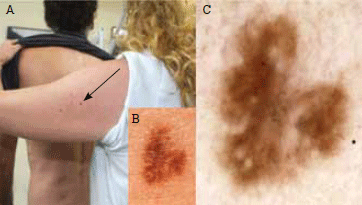
Figure 8. Case study clinical view (A, B). Dermatoscopic appearance (C) reveals asymmetry (chaos) and the clues of grey structures (centrally) and lines radial, segmental (asterix)
Detecting symmetrical melanomas
No algorithm can have 100% accuracy and robotic adherence to even the best method will occasionally result in failure to diagnose malignancy. To reduce the risk of failure to diagnose melanoma, we have defined four exceptions to the rule that symmetrical lesions are benign.9 Any of the following lesions should be considered for biopsy unless unequivocal diagnosis of seborrhoeic keratosis can be made:
- any changing lesion on an adult
- any lesion on the head or neck with dermatoscopic grey appearance
- any nodular pigmented lesion
- any acral lesion with a parallel ridge pattern.
Possibly the biggest trap for beginners is failing to diagnose a clinically obvious malignancy because it lacks the dermatoscopic features they are expecting to see. Never be dissuaded from a confident clinical diagnosis by unimpressive dermatoscopic features.
Summary
Dermatoscopy is an essential tool for any doctor who encounters and treats skin cancer and the acquisition of a dermatoscope is the first step in a process that includes choosing a diagnostic method. A method based on objective criteria, such as chaos and clues, reduces the steepness of the learning curve and forms an excellent framework to organise growing clinical experience.
Conflict of interest: none declared.